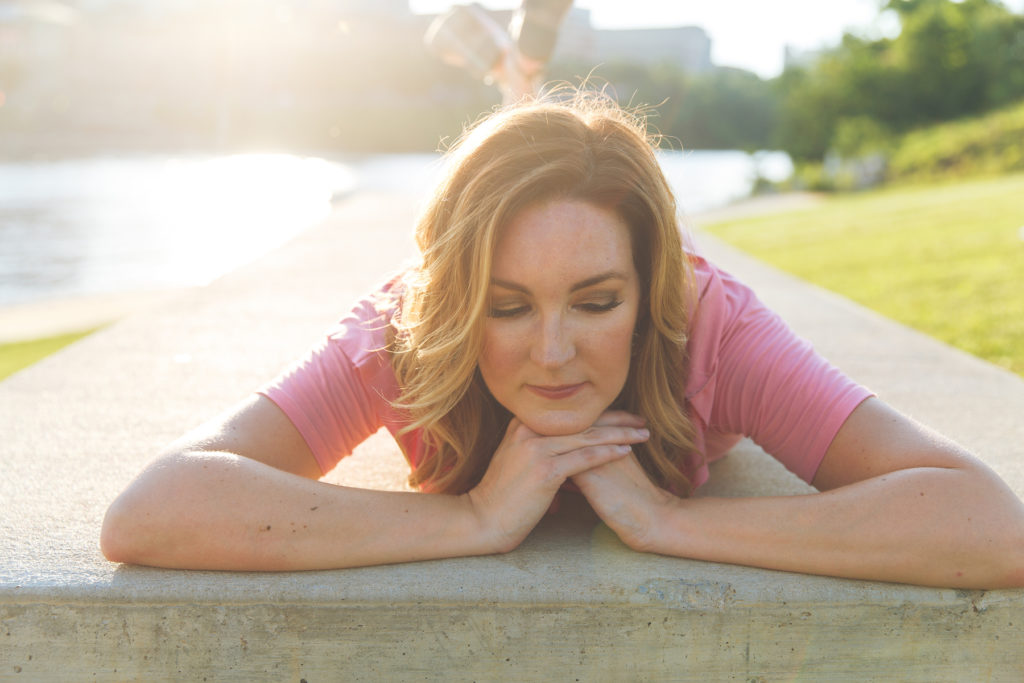
in Living Hope, Stillness, Stories of Hope
For as long as I can remember in my adult life, I was always moving. I was raised to be a type-A perfectionist, with my father the quintessential model. He was always moving, always busy – even on the weekends, we’d hear him up at 6 a.m. painting the exterior of our house on a rented cherry picker or meticulously washing all our cars before the day started.
I was raised to believe that stillness equaled laziness, save for one exception – when we were on the water. It was my father’s only respite, the only place we saw him sit, contemplate, and savor life. It’s also the reason why I believe that his Heaven has to be on a body of water somewhere. Naturally, being on the water had the same effect on me. It was the only place I gave myself permission to be calm and unburden myself with the list of expectations I felt required to fulfill.
My proclivity to take on too much increased exponentially as I became a high school teacher, wife, and mother. At first, it fulfilled me, having so many people need me and getting that satisfaction and high from being able to satisfy those needs. It doesn’t take a genius to know that, after several years, I burned out.
I lost myself, whatever shreds still existed, and my life became a succession of panic attacks, self-medication, and despair.
I wanted to reclaim that part of my youth, that girl who felt at one with the water, calm and still.
But I had no idea where to find her. She wasn’t in yoga classes, self-help books, or Bible studies. She wasn’t even in therapy. I was lost. I spiraled into a never-ending cycle of busyness in an attempt to divert my attention from the fact that I simply wasn’t happy. I wasn’t joyful. I didn’t even know who I was anymore; I just fulfilled whatever role was needed – wife, mom, teacher, daughter, sister, friend. But I never was me, because looking back on it, I didn’t know if she fit into the life I had so carefully created.
Then the bottom fell out, and my husband and I got a divorce. More truthfully, I left him. Somewhere inside, the gumption buried within pushed me to walk away from what had become an extremely unhealthy dynamic, and with each agonizing day, I ironically grew closer to that girl on the water.
I began the Practice of Stillness when the expectations of the perfectly manicured lawn and life were ripped away and, instead of pushing away the pain with distractions, I chose to face the void and embrace the Stillness.
I had no dinner or table to prepare, no parties to attend, no people to impress. My life was in shambles, but the fluff burned away in the fire. I had nothing but time. With each passing day, I felt small parts of my soul opening again, reintroducing themselves. The hard part about Practicing Stillness is that you must be willing to consider your life with honesty and transparency. The Stillness opens your heart to the dark and ugly truths you always knew were there but never wanted to acknowledge.
At the heart of my busyness always was avoidance – of pain, of discomfort, of having to actually change. I would do anything to avoid those feelings, and more often than not, I would use external things as a coping mechanism, whether it be work, alcohol, or even the noblest of professions, motherhood. We easily can wrap ourselves in the shroud of the Pinterest-perfect mom, humble servant to all – and while that life can certainly be noble to some, for me, it was just one more train car to Destination Avoidance.
I remember the first time I allowed myself to be still in the immediate wake of my separation; a friend had invited me to the lake to kayak out to an island, and I, being very avoidant of the outdoors and the discomfort it brought, was very reluctant to go. Nevertheless, I forced myself on, and as I paddled out listening to the gentle lap of the water against my boat, I felt reborn. I turned my head upward toward the bright sun and breathed in deeply, experiencing an exhilaration that made me feel more alive than I had felt in years. And for the first time in months, I was Still. The racing thoughts of my divorce quieted, and for those brief ten minutes, I was transported back to my dad’s boat. My soul was calm, despite the raging fire that seemed to consume my life; and with each breath, I felt my very being awaken as if from a deep sleep.
I’ve chased that moment ever since, and it still humbles me when I am able to Practice Stillness. I know now that being near or on the water instantly brings me there, but in the chaos of daily life, I find moments to turn off my phone, to go outside, and to allow myself to sit quietly. I allow myself the discomfort of the gut check, the honesty, to take inventory and see if there are any dark parts in my body that need attending to.
That’s the great thing about The Practice of Stillness – once you give yourself permission to look inward and you start bringing the dark spots to life, the freedom that exists in its place is addictive. Those dark spots don’t seem as daunting anymore, and Stillness becomes a quicker inclination than the cover of avoidance.
It seems counterintuitive that Stillness is an active choice, but it is. I still have to force my soul, my mind, and my body to quiet itself, just like I did that day on the kayak. But, oh, the replenishment it brings. This is Living Hope.
